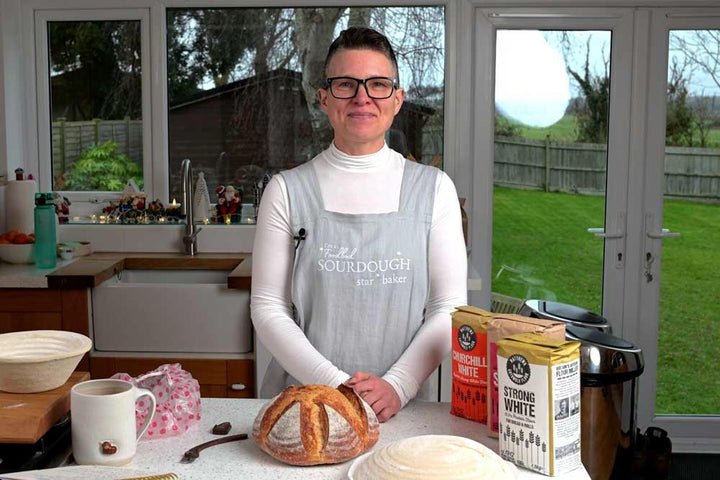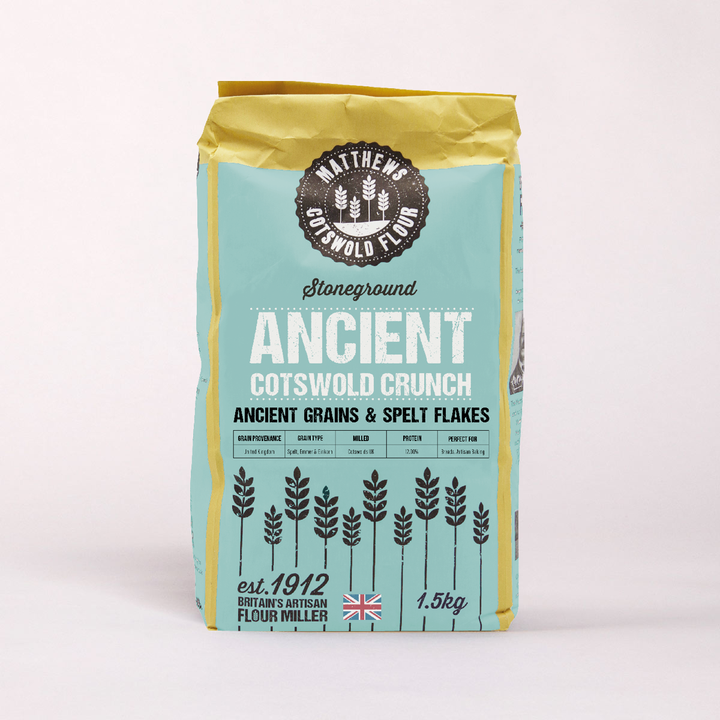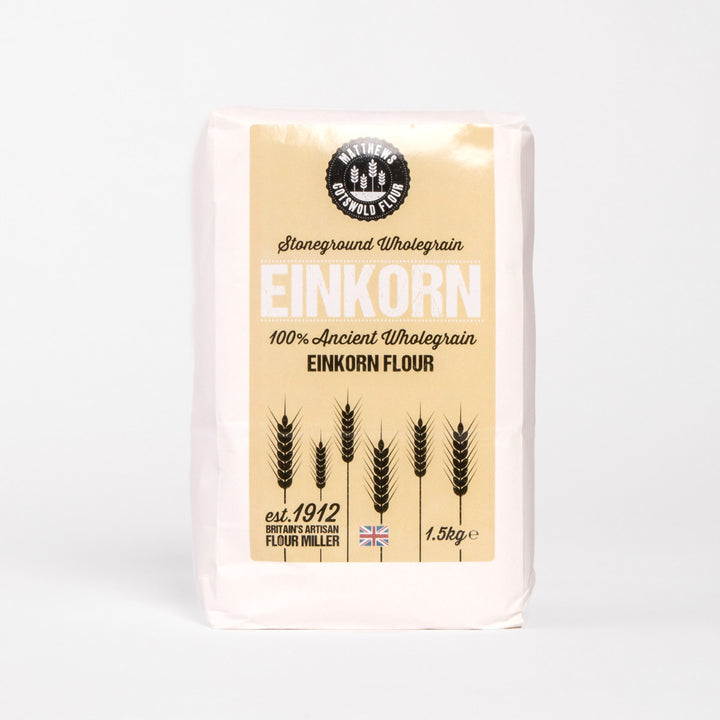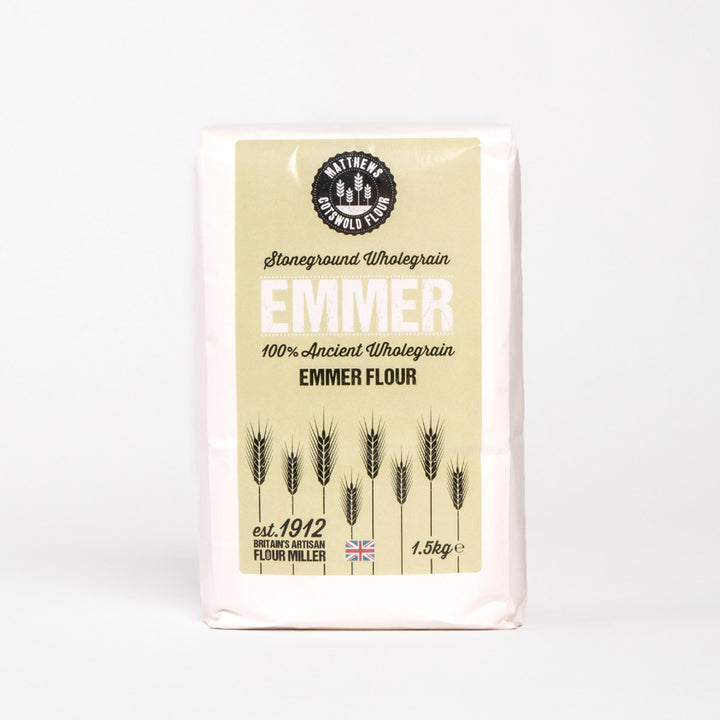Elaine's Sourdough Making FAQs Answered


This guide is about the sourdough making process and the frequently asked questions I get all the time. For more about sourdough starter specific questions, you can check out our Sourdough Starter FAQ here – with video and written guide.
02:08 Why did my dough spread? Why hasn’t my loaf held its shape?
These are the most asked questions I get. When you have turned out your dough and the dough has spread, so it hasn’t held its shape. Or your loaf hasn’t turned out how you expected – it might be wider or flatter – then the following guide will give you your answers.
03:47 What does a well proved dough look like?
Like this:

05:07 Does size matter?
As an easy guide, you want your dough to double in size. A good way to check this, is to take a photo before proving to compare later.
06:28 Have I been firm enough?
One of the reasons why your dough might spread when you’re making a loaf, especially when you’re new to sourdough, is because you haven’t been firm enough with it. This means that when you handle it, putting it into a ball, you need to be firm. Being too gentle can spoil your outcome. Being firm allows you to make a ball of dough that sits in your hand without spreading. Then it’s strong enough for you to put in your banneton.

08:55 What difference does water make to sourdough?
Your dough might be too soft because it’s had too much water in it since the beginning. Water absorption depends on the type of flour you are using – not all flour is the same and not all flour absorbs water in the same way.
I use Matthews Strong White Bread flour in my master recipe, which has high water absorption – with 350g water to 500g of flour and this works perfectly with the flours that I use. If you use different flours, you may need a different amount of water. If you use supermarket own brand, budget flours, or even organic flours, you probably need to use less water, because they don’t hold water in the same way. Use 25g less water (as a general rule). If you’ve got soft water or filtered water, you will also probably need to use 25g less water. Too much water is one of the reasons why your sourdough might spread.
10:44 What does overly wet sourdough look like?
Like this monster:

This is what a wet dough looks like when it’s kept on proving. It’ll collapse as soon as you touch it. It’s very similar to an overproved dough.
12:06 What do I do with a monster like this?
You can try pulling it into a ball if you like, but it will be very challenging. The best thing to do is to pull it together as best you can, put it in a pan and bake it as focaccia – it will still make a great bread like that. You can also pull it together into some kind of shape and put it in a loaf pan to bake it as sandwich loaf. Don’t be too quick to throw it out – dough can always be used, even if it’s more liquid than this. Just mix in some yoghurt and turn it into flatbreads. Mix in some milk and turn it into pancakes. You’ve worked hard on this so don’t ever throw it away!
13:33 What does overproved sourdough look like?
Like this:

15:06 Why does sourdough overprove?
Sourdough will overprove if you leave it too long, or it has been far too warm in your kitchen, or both. To understand the way that proving works: it’s a marriage between how much starter you have in your dough, your room temperature, and how long it’s proved for.
My master recipe is based on using 50g of starter, being in a room that’s 18 to 20 degrees C (64 to 68 degrees F) for 8 to 10 hours. This doesn’t mean that you need to manipulate your home kitchen to only be these temperatures. What it means is that if any part of this equation changes you will get a different outcome:
- If you use more starter and leave it at that room temperature, it will be proved faster
- If you use less starter at that room temperature, it will take longer to prove
- If you use the 50g of starter and it gets colder overnight, it will take longer to prove
- If you use the 50g of starter and it gets hotter overnight, then it will prove faster and you risk overproving.
These are all easy to manage. One part of this is to have a good thermometer in your kitchen and the other is to make notes. If you have a warm kitchen – if you live somewhere warm, have an aga that keeps your kitchen at a higher temperature – all you need to do when proving your dough is either move it away from the heat or use less starter.
You should never need to wake up super early to manage your dough. You just need to understand that it’s the amount of starter you use, plus your room temperature, to give you the proving time. Knowing this, you can figure out when you need to start your dough to have it proved by the right time.
20:33 How much should sourdough grow in the fridge?
It doesn’t matter how much your sourdough grows in the fridge – what matters is how it bakes. I have purposely left this one in the fridge for longer so I can show you what happens when you turn it out. When you turn it out, it may splodge.
22:30 Why couldn’t I score my sourdough properly?
Don’t immediately blame your lame – do keep an eye on how sharp your blade is and how often you change it, but this is rarely the reason. Usually if scores don’t open up or it drags when you cut it, it’s because your dough is so soft. Because it has lost it’s structure the score won’t open up when you bake it. That’s no reason not to bake it – don’t waste your dough! It’ll gain whatever it can from being in the pan.
24:20 Why did my dough stick to my banneton?
Usually because the dough is too sticky – often from overproving or too much water – it will stick to your banneton.
24:42 Why do I have a gummy loaf?
If your loaf is gummy inside, either you need to wait longer before you cut into it, or its under/overproved, or you just need to bake it differently. Often loaves just need to bake for longer. The timings I give are all based on my oven, but all ovens are different – so adjust according to your oven.
Often loaves just need baking for longer. You can add a lot more time on to baking sourdough than you think – it’s very hard to overbake sourdough. Or, if your loaf is coming out quite dark but still gummy inside, try turning the temperature in your oven down a bit and baking for a bit longer.
25:38 What does a loaf look like when the dough used was too soft?
Like this:

I have purposely challenged this loaf. You can see that the score didn’t open up, it has burst, and the shape is uneven because it needed to be pulled into a tighter shape.
26:15 Why is the base on my loaf so dark and hard to slice into?
This often comes down to your oven. If your oven has an uneven heat, or if it’s a gas oven (or electric oven with the element at the bottom only) then it’s heating the bottom first. This means that the bottom of your sourdough loaf is baking faster than the rest of it. In that situation, put an oven tray or a cooking sheet on a rack further down the oven (or even sit it directly underneath the pan you’re baking with) to deflect the heat around the loaf and protect the base.
27:33 How tall should my loaf be?
Your loaf shouldn’t be any specific height, shape, or look any certain way. All that matters is that you have a loaf that you love and like to eat. Don’t focus on height, don’t focus on holes, don’t focus on ears – because none of these add flavour to it.
28:11 How do I tell when my sourdough is fully proved?
Hopefully all of the above will show you this – when you have a well-structured dough. The poke test doesn’t work with sourdough. When your sourdough is fully proved after an overnight prove, or after it has been in the fridge, it’s too sticky for the poke test. It only really works with room temperature dough, and not when you’ve put the dough into the fridge.
28:47 What about the windowpane test?
Don’t worry about it – you don’t need this test.
28:58 Why is the sourdough going into the fridge?
The time in the fridge is to develop flavour and to give your sourdough extra shape – to really firm it up.
29:37 How can I soften the crust?
If you want to soften the crust, when you take it out of the oven and it’s freshly baked, put it on a wire rack and cover it with a clean tea towel then leave it to cool. Then as it cools the steam will soften the outer crust. Alternatively, replace half of the water in the recipe with milk and this will give you a softer finish. Any loaf with fats in it will give you a softer crust.
30:23 How do I start using new flours? How do I add extra ingredients?
We have separate videos coming to talk more about both of these – be sure to join the Super Sourdoughers’ Club to be the first to see them!
30:44 How do I make a loaf more sour? How do I make a loaf less sour?
If you go back to our FAQ about Starters, this has some helpful information about this. Also – if you use wholegrain flour this will give you a more sour loaf.
If you want a less sour loaf then an easy way is to add some dairy. Replace half the water in the recipe with milk and you’ll get a less sour loaf. If you don’t prove it for too long in the fridge, you’ll also get a less sour loaf.
Typically, I prove mine for a minimum of 3 hours in the banneton in the fridge to give it the shape that I want. But you can then leave it for up to 24 hours to give it more flavour. Less flavour – take it out at 3 hours. More flavour – leave it in for longer.
31:48 What do I do if I don’t have a banneton?
Find a similar sized bowl and line it with a clean tea towel and flour your tea towel. It needs to be a similar size. This is actually another reason why you may have widely spread loaves. If you’re using a banneton that’s too large for your dough then it can become too widely spread. Make sure you check the size of your banneton. The one I have in the video is made to hold dough of between 500g and 750g and it measures 21.5cm across. It works perfectly with my master recipe.
32:40 Do I need to preheat my oven?
No. I don’t preheat my oven, I don’t preheat my pan, everything goes in cold.
33:16 Recap
Usually, it all relates back to the same thing: understanding the connection between how much starter you have in your dough, the room temperature you’re proving at, and for how long. Remember that you have full control over that.
If you’re worried about overproving, just use less starter. If you’ve started your dough too early and you think it might overprove overnight, then just stick it in the fridge overnight. It’ll prove to a certain extent overnight then slow down. When you come back to it in the morning just take it out and let it return to room temperature to finish off the process.
34:11 Check to see how much water works with your flour
If you’re using the Matthews Flours that I use, all of the water quantities given in my recipes work perfectly with them, based on hard water. If you have softer or purified water, you will need less.

















